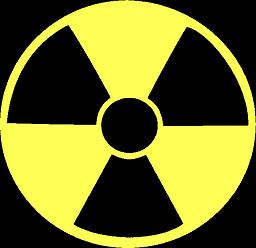Radiation exposure can cause a variety of effects in the human body collectively known as radiation sickness. Exposure to radiation can be accidental, therapeutic or deliberate. Treatment of radiation sickness is largely supportive, and prevention is best achieved by avoiding exposure to radiation.
Radiation
Radiation sickness results from excessive exposure to radiation, which may be accidental or intentional. It can occur with either a single large exposure or a series of smaller exposures.
Sources of Radiation include:
- Background radiation, such as cosmic radiation and radiation from naturally occurring radioisotopes of common elements.
- Accident exposure, which may result from accidents in research, industry and nuclear powerplants.
- Therapeutic exposure, from diagnostic imaging in the form of X-rays, CT and other scans, as wellhyperthyroidism.
- Intentional exposure, such as strategic nuclear explosions.
Radiation can be classified according to the type of radiation:
- Non-ionising radiation, which generally does not cause significant tissue damage: ie. Light waves, ultraviolet waves, microwaves, radar.
- Ionising radiation, which can cause tissue damage: ie. x-ray, gamma rays, particles, including neutrons, alpha particles, beta particles, protons and electron beams.
Effects of radiation
Acute effects:
- Haemopoietic syndrome results in lymphopenia within days, and neutropenia and thrombocytopenia in 2-3 weeks.
- Gastrointestinal syndrome results in vomiting within hours, and diarrhoea and vomiting in 4 days.
- CNS syndrome results in nausea, vomiting, disorientation, coma and cerebral oedema within hours.
- Radiation dermatitis results in erythema, purpura, blistering, secondary infection and loss of body hair.
Delayed effects:
- Infertility
- Teratogenesis
- Cataracts
- Neoplasia including acute myeloid leukaemia, thyroid, salivary glands and skin
Treatment
Acute radiation sickness is a medical emergency. Treatment is largely supportive with preventative measures. Treatment of complications such as infection, haemorrhage and fluid loss is essential.
Prevention
- Avoid exposure where possible.
- Use shields over parts of body not being treated when receiving diagnostic imaging or radiation therapy.
Radiation exposures in perspective
- Average annual background radiation exposure = 2.5 mSv
- Chest x-ray = 0.02 mSv
- Barium enema = 7 mSv
- CT abdomen/pelvis = 10 mSv
- Haemopoietic effects = 100 to 500 mSv
- Lowest dose resulting in some deaths = 1 to 2 Sv
- Dose at which 50% of people will not survive = 3 to 4 Sv
- Dose at which there is virtually no chance of survival = 10 to 12 Sv

References
- Dainiak, N. Waselenko, J. Biology and clinical features of radiation injury in adults. 2005. UpToDate.
- Kumar, P. Clarke, M. Clinical Medicine. 5th ed. 2002. WB Saunders.
All content and media on the HealthEngine Blog is created and published online for informational purposes only. It is not intended to be a substitute for professional medical advice and should not be relied on as health or personal advice. Always seek the guidance of your doctor or other qualified health professional with any questions you may have regarding your health or a medical condition. Never disregard the advice of a medical professional, or delay in seeking it because of something you have read on this Website. If you think you may have a medical emergency, call your doctor, go to the nearest hospital emergency department, or call the emergency services immediately.







